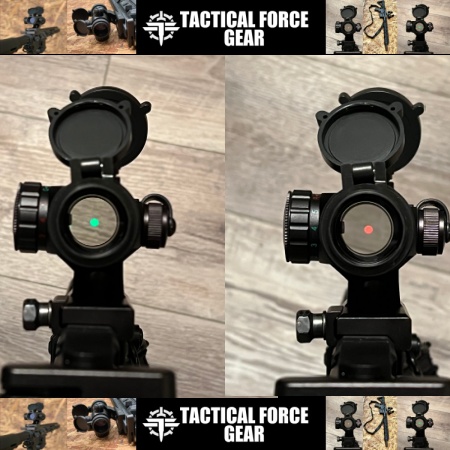This article was originally published by Dr. Vernon Coleman at VernonColeman.com
It is a myth that euthanasia is painless and dignified. There is absolutely no evidence to show that it is either. But there is plenty of evidence to show that it is neither. –The Exposé
The following essay is taken from Jack King’s book `They Want To Kill Us’. Please read the book. The conspirators who are taking us into “net zero are lying and pushing the world into accepting euthanasia (aka doctor-assisted suicide). The media refuse to carry material questioning euthanasia. There is no debate in public. No one will interview Jack King. But in November 2024, MPs in Britain will discuss introducing euthanasia into Britain.
From Jack King
It is a convenient myth (convenient for the proponents of euthanasia) that euthanasia (in its various forms and incarnations) is painless and dignified.
There is absolutely no evidence to show that it is either.
But there is plenty of evidence to show that it is neither.
Euthanasia does not provide the painless, peaceful death that its advocates claim it to be. There is no perfect way for the government to kill people. As Samuel Beckett said: “Even death is unreliable.”
Here are 25 things everyone should know:
1. A study in the journal ‘Anesthesia’ reported that there were no standardized methods for euthanasia and so, as a result, there are frequent cases of prolonged and distressing deaths. There appears to be a high incidence of vomiting, re-awakening from coma, and prolongation of the dying process (with some individuals taking up to seven days to die.)
2. In America, doctors cannot access drugs to use in cases of the death penalty because of cost and availability. International drug companies are unwilling to provide drugs intended to kill people on ethical grounds. (It is unusual to see drug companies citing “ethical grounds” as a reason not to do something. I suspect that the real reason is that the drug companies are worried more about legal and reputational issues.)
3. Dr Bryan Betty, medical director of the Royal New Zealand College of GPs has warned that mixing concoctions of drugs has led to traumatic deaths.
4. There is considerable confusion about what to do if an initial attempt at euthanasia fails. Should the patient be told that they have to give their consent a second time? Or a third time? What should be done if a patient is semi-conscious and has not died? Should they then be kept alive? Or should another attempt be made to kill them?
5. A study performed in the Netherlands showed that in 21 of 114 cases, the patient did not die as soon as expected or woke up and the doctor had to kill them for a second time.
6. What happens if the doctor or nurse who is performing the euthanasia has left the building – which is likely to happen if a death takes a number of days?
7. What happens if a doctor or nurse cannot put an IV line into a vein? (This is something that often happens with elderly patients whose veins may be frail or damaged.)
8. The same drugs that are used for killing prisoners on death row are sometimes used to kill patients who have consented to euthanasia. However, there is evidence that the killing of prisoners does not always go smoothly and can take longer than might be expected. (Lethal injections were introduced as more humane than the gas chamber or the electric chair. There is no evidence that they are.)
9. One of the drugs used in the authorized killing of patients is propofol which can sting as it flows through a vein when given in normal doses. No one knows what effect it has when given in large doses in euthanasia.
10. Dr Joel Zivot, an anaesthesiologist and critical care doctor, has suggested that death by euthanasia could feel like drowning. If paralyzing drugs are used, the patient appears calm, peaceful, and quiet – but that doesn’t tell us what the patient is experiencing.
11. When killing drugs are given orally, the death can take up to ten hours. If a doctor or nurse is not available with an IV kit ready, the distress to patients and relatives can be considerable.
12. People being killed by drugs may make gasping noises. “We don’t think they are signs of distress,” said Dr James Downar, a specialist in palliative and critical care. Note the word “think.”
13. Monitors are not used when a patient is being killed. This means that there is no evidence about what is happening, and death can only be certified by a doctor or nurse feeling for a pulse. No attempts are made to monitor brain or cardiac response.
14. Autopsies of executed American prisoners show the accumulation of fluid in the lungs. This is very distressing, for the patient is effectively drowning in their own secretions.
15. Experts fear that patients being killed may suffer intolerable, unbearable physical or psychological pain.
16. In Belgium, the relatives of a 36-year-old woman heard screams when she was supposedly being euthanized. A post-mortem showed that the woman had been suffocated with a pillow after the drugs failed to kill her.
17. An elderly, demented woman in Belgium was euthanized after her family decided that she should be killed. Since it was claimed that the woman didn’t understand what was happening, the doctor laced her coffee with her sedatives – while she was chatting with her family. The doctor then gave another sedative by injection. The woman then stood up. Family members held her down while the doctor injected her and killed her. In court later the judges declared that “given the deeply demented condition of the patient, the doctor did not need to verify her wish for euthanasia.” (I find it difficult to understand how this death could be described as euthanasia.)
18. A gunshot would be quicker and probably more painless than drugs. Why don’t advocates of euthanasia endorse the idea that doctors should simply shoot patients? Patients could, like Nurse Edith Cavell, be put on a chair and shot in a scruffy courtyard. It would be faster and more certain than any other way of killing. A firing squad could be made up of doctors and nurses – with special fees for the occasion, of course.
19. In more than half of the cases where individuals in Oregon, USA were subjected to euthanasia, there is no record of whether or not there were any complications.
20. Complications that have been recorded during euthanasia include difficulty in finding a vein, spasms, twitching, nausea, vomiting, tachycardia, sweating, and gasping. One instance of euthanasia failed because the doctor had ordered the wrong drug. Another attempt was delayed when the doctor had to leave to fetch a second batch of lethal drugs.
21. Taking lethal drugs by mouth can be traumatic. It is not unusual for patients to take many hours to die. One patient took 104 hours to die. One patient became unconscious 25 minutes after swallowing lethal medication but woke up and regained consciousness 65 hours later.
22. One report showed that lethal injections caused severe pain and severe respiratory distress with associated sensations of drowning, asphyxiation, panic, and terror in the overwhelming majority of cases. Dr. Gail Van Norman has said, “It is a virtual medical certainty that most, if not all, prisoners will experience excruciating suffering, including sensations of drowning and suffocation from pentobarbital.”
23. A study of more than 200 autopsy reports after executions in nine American States showed evidence of pulmonary edema in the lungs (likely to cause a feeling of drowning or suffocation)
24. Midazolam used in executions has caused signs of pain – including gasping, choking, and coughing, with patients heaving against their restraints.
25. Evidence shows that some people who choose assisted suicide vomit their lethal dose of drugs before it can be absorbed.
Note: The essay above is taken with his permission from Jack King’s book `They want to kill us’. You can buy a paperback or an eBook for under a fiver from Amazon. Just CLICK HERE I believe this is the only place where you can find the truth about euthanasia.
About the Author
Vernon Coleman MB ChB DSc practiced medicine for ten years. He has been a full-time professional author for over 30 years. He is a novelist and campaigning writer and has written many non-fiction books. He has written over 100 books which have been translated into 22 languages. On his website, HERE, there are hundreds of articles that are free to read.
There are no ads, no fees, and no requests for donations on Dr. Coleman’s website or videos. He pays for everything through book sales. If you want to help finance his work, please just buy a book – there are over 100 books by Vernon Coleman in print on Amazon.
Read the full article here




